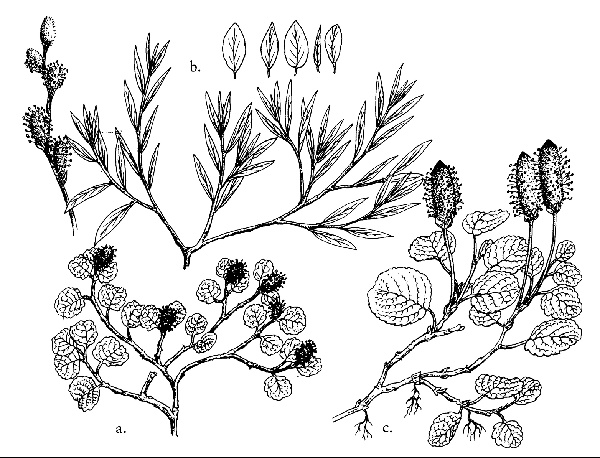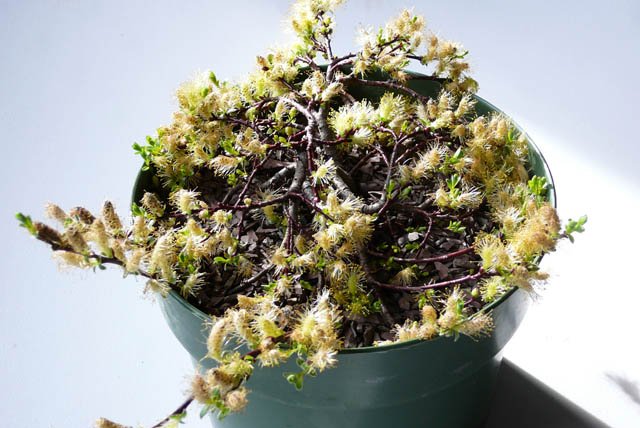Authors: L.
Variable in habit, from mat-forming to erect but rarely above 50cm in height. Young shoots covered with silky hairs becoming glabrous and light brown with age. Leaves ovate to elliptic, 6-20 X 3-8mm, acute, entire, at first silky above becoming glabrous dull green, densely silky below. Catkins sessile appearing along the shoots before the leaves, to 2.5cm long, anthers golden yellow, scales flat, hairy with dark tips. Northern, central and western Europe extending to Italy and the Carpathians, mainly in lowland bogs, sand dunes and moors, also at higher altitudes reaching 1700m in central Europe, generally calcicole. It is a very variable species, a fact which has led to complex literature. Flora Europaea groups it with two other related species, i.e. S. arenaria (syn. S. repens var. argentea and S. argentea), a more robust plant having obovate leaves with rather blunt apex, up to 2.5-4.5cm, which remain densely grey hairy on both sides. It is not an alpine species, being found largely on maritime dunes on the Atlantic Coast of Europe. It is much grown in gardens, though its handsome foliage but tends to become large (up to 1m.) particularly if planted among other shrubs, but can be pruned hard annually. S. rosmarinifolia, syn. S. repens var. rosmarinifolia may be distinguished by its much narrower, almost linear leaves which are generally broadest below the centre, the catkins also are more globular in outline. Its range extends from central and eastern Europe to the mountains of central Asia, growing in situations similar to those favoured by S. repens. A willow commonly supplied as S. rosmarinifolia is the much larger and quite different S. elaeagnos, which forms a large bush or small tree. Owing to its great variability S. repens has given rise to a large number of selected forms and cultivars, among which may be mentioned the diminutive S.r. 'Voorhuizen', the very similar S.r. 'Iona' and S.r. 'Boyd's Pendulous' (probably the same as S.r. 'Sericea Pendula') a plant of weeping habit that will follow closely and clothe the surface of a rock or exterior of a trough and can, if desired, be grafted to form a miniature weeping tree. For S.repens var. subopposita, see S. subopposita.

a, S. herbacea; b, S. repens; c, S. reticulata;

Sign up for our newsletter to receive our monthly update direct to your inbox. Featuring our latest articles and news.
Built by Atomic Smash

